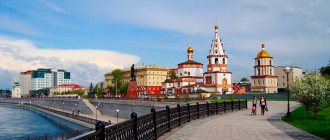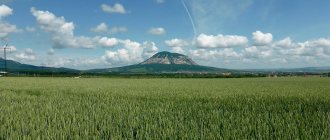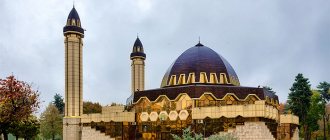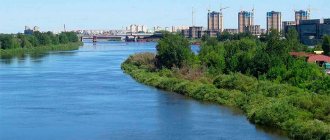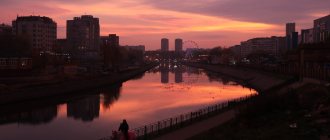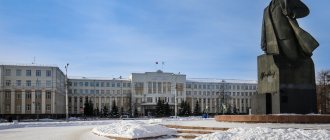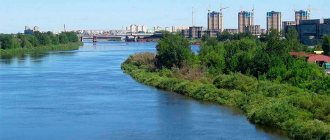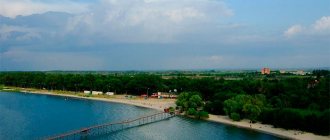It’s unlikely that anyone has heard of the large Russian island of Karafuto. In fact, everyone knows him. This is how the Japanese called the island of Sakhalin in their own way. Its capital is Yuzhno-Sakhalinsk. In the century before last, the best advertisement for the city was made by Chekhov, who toured the island and wrote a whole book about it. These places are worth seeing with your own eyes.
Yuzhno-Sakhalinsk
At the latitude of Monaco
Sakhalin is located on the eastern borders of Russia. The island is washed by two seas at once - the Sea of Okhotsk and the Sea of Japan. It is separated from the mainland by the narrow Tatar Strait. Yuzhno-Sakhalinsk is nestled at the very south of the narrow tip of the island. The city has the status of the center of the Sakhalin region. The number of inhabitants does not exceed 200 thousand people. However, in terms of population it ranks sixth among the cities of the Far East. It is separated from Moscow by 6400 kilometers! The time difference with the capital is 8 hours. The city is located in a seismic zone.
Typically, island cities serve as ports and are therefore located on the coast. In Yuzhno-Sakhalinsk, fate turned out differently. The city is located far from the sea: 50 kilometers from the west coast, 20 from the south and 25 from the east. It is framed from the east by a mountain range. Nearby stands Chekhov Peak (1045 meters) - the highest Sakhalin peak. The role of a seaport is performed by the city of Korsakov, located 40 kilometers south of the regional capital.
Fog is a frequent visitor to the island
The city is located on the banks of the Susuya River. Despite its small size - 83 kilometers - it is considered the largest waterway in the southern part of Sakhalin. Translated from the language of the Ainu - the indigenous inhabitants of the island - its name means “river overgrown with willow.” Susuya quite quickly covers the path from its source to its mouth and flows into the Sea of Okhotsk.
The location of the city determined the special microclimate of Yuzhno-Sakhalinsk. The official name for this climate is temperate monsoon. The coldest month is January, and the warmest month is August. The average temperatures in these months are, respectively, minus 12 and plus 17 degrees. Most sunny days occur in May, June and September.
High humidity makes its own adjustments - in summer it is hot and stuffy even in the shade, and in winter slightly negative temperatures cause the same sensations as in frost. The best time to visit the island is from June to September. Despite the fact that Yuzhno-Sakhalinsk is located at the latitude of Monaco, it is equated to the regions of the Far North.
The link location cannot be changed
By Russian standards, Yuzhno-Sakhalinsk is a fairly young city. It was founded in 1882 as a settlement for convicts. At that time the village was called Vladimirovka. The question arises: why were the convicts exiled so far away, if Siberia with its endless expanses was much closer to the capital? The answer is simple. It was necessary to populate the remote territories of the empire, but no one wanted to go to these regions voluntarily.
Coat of arms of Yuzhno-Sakhalinsk
In the 19th century, Sakhalin had the official status of a place of hard labor and exile. The place for the settlement was chosen for a reason - there were arable lands all around. This allowed residents to provide themselves with grain, meat and milk. The sea supplied plenty of fish. There were four settlements in total on the island, but the village of Vladimirovka grew the fastest. At that time, 130 people lived in it. Almost all of them, with the exception of children, were convicts.
At the beginning of the last century, it was already a full-fledged town with craft workshops, a post office, a small school, shops and a church. Alas, he did not remain Russian for long. In 1905, the Japanese captured the island and renamed Vladimirovka Toyoharu. The occupation continued until the end of World War II, and only in 1945 Sakhalin returned to the USSR. In 1946, the Yuzhno-Sakhalin region appeared on the map of the country. The city of Toyohara took over the capital's functions, which was immediately renamed Yuzhno-Sakhalinsk.
Sakhalin Puppet Theater
Sakhalin Puppet Theater
Yuzhno-Sakhalinsk
The only puppet theater on Sakhalin appeared in 1981. The first performance took place on the stage of the House of Culture of Railway Workers. Over time, there were a lot of spectators, and in 2011 the theater moved to its own building. The housewarming party was celebrated with the play “John and the Fire” by Moldovan director Petru Vutcarau.
In the same year, the 1st Sakhalin International Puppet Theater Festival was held here. Groups of puppeteers from Europe and Asia took part in it. Among the guests of honor were director Ekaterina Obraztsova and People's Artist of Russia Sergei Alimov, who created a cartoon about the lion Boniface.
Today, the Puppet Theater hosts more than 40 children's performances based on Russian and foreign fairy tales. The repertoire also includes productions for teenagers and adults - “Joseph Brodsky. All this was...", "Pollyanna", "An Old Tale", "Oscar and the Pink Lady", "Tanabata". Theater artists often go on tour to Japan, Korea, Turkey, Lithuania and other countries.
Japanese heritage
Yuzhno-Sakhalinsk cannot boast of outstanding architectural masterpieces. Since it was originally built with wooden houses, severe fires often occurred. For this reason, no old buildings have been preserved in the city. The legacy of the Japanese occupation was a system of clear rectangular buildings. All streets ran either parallel or perpendicular to the railway. There was no greenery at all in the city center. Only on the outskirts did the Japanese create a small park with a pond.
Vladimirovka in the 1880s
Traditionally, the Japanese built very densely. Single-story frame shacks huddled together. They did not have yards or outbuildings. The internal plywood walls of the houses were often sliding, and the floors were earthen. The dwellings were heated by portable iron stoves, from which ceramic pipes were routed along the outer walls. Alas, typical Japanese residential buildings have not survived to this day.
Toyohara in the 1930s
This period is evidenced only by documents and photographs in the Sakhalin Regional Museum of Local Lore. It is interesting because it occupies a former Japanese building, built in the traditional “teikan-zukuri” style. This style appeared in Japan in the Middle Ages, and then became popular again at the beginning of the 20th century. There are no other buildings like this in Russia. The museum's exposition gives a complete picture not only of the history of the development of Sakhalin, but also of the flora and fauna of the island. Recently, another exhibit was a Japanese tank from the Second World War.
In the footsteps of Chekhov
In 1890, Chekhov visited the convict island. The result was his book “Sakhalin Island”. An entire museum is dedicated to this book and the visit of the famous writer, which is called the Literary and Art Museum of A.P. Chekhov’s book “Sakhalin Island”. The city also has a Geological Museum, a Zoological and Botanical Park, a Bear Museum and a regional Art Museum.
Nishiichijo-doori Street in Toyohara (now Lenin Street)
There are many interesting places in the immediate vicinity of Yuzhno-Sakhalinsk. The climb to Chekhov Peak, which is located not far from the city, is very popular. Since the peak is only one kilometer high, the ascent can hardly be called conquest. Rather, it is a walk through picturesque places along a marked path, along which not only rosemary, blueberries, lingonberries and rowan grow, but even bamboo!
Railway Bureau Karafuto
The Japanese considered the mountain sacred, so they built a small temple on the top, dedicating it to the sun goddess Amaterasu. It has survived to this day. A stunning panorama opens up from the top. They say that in good weather you can actually see the Japanese island of Hokkaido. The trail is especially picturesque in autumn, when the color palette is complemented by gold and crimson.
Cape Aniva Lighthouse
The lighthouse is installed on Cape Aniva, which is located at the inaccessible end of the narrow and rocky cape of Sakhalin Island.
The lighthouse is made in the form of a concrete round tower, which is topped with a lantern. In this case, the flashlight is located in a small room, from where the light signal is sent. The lighthouse is painted in horizontal stripes of black and white. It is interesting to note that the facility was built with 7 floors, since it was assumed that automation should be controlled by permanently living employees. These days, the lighthouse that still adorns Cape Aniva is uninhabited.
Outdoors
People also come to Yuzhno-Sakhalinsk to improve their health. The most famous health resort is the Sinegorsk Mineral Waters sanatorium. Healing water was discovered in these places at the beginning of the 20th century. Local residents were surprised by the water in the Sinegorka River, which had a characteristic sour taste. The first hospital was built here by the Japanese. Leaving the island, they disguised and concreted the source. It was only possible to rediscover it in the 60s.
The city has a Geological Museum
The peculiarity of the local water is that it has a high arsenic content. Don't be scared! In small doses this element is useful. It’s not for nothing that ancient healers said: “Everything is poison and everything is medicine. It's just a matter of quantity." Arsenic mineral waters are extremely rare in nature. In Yuzhno-Sakhalinsk, this natural medicine is used to treat diseases of the joints and lungs, as well as nervous disorders. An additional option to Sinegorsk mineral water can be the healing mud in the village of Goryachiye Klyuchi.
In order not to lead to illnesses, it is better to engage in their prevention. The sports and resort complex “Mountain Air” provides excellent opportunities for this. It is located just three kilometers from Yuzhno-Sakhalinsk. In winter, there are nine slopes, to which skiers are transported by a gondola-chair lift.
In the immediate vicinity of Yuzhno-Sakhalinsk there are many remarkable rocks
In summer it is worth taking a walk to the Yuzhno-Sakhalinsky mud volcano. It is located just two dozen kilometers northwest of the city. The best period to visit is from May to October. By jeep you can get almost to the volcano. The walk from the Novaya Derevnya railway station to the crater takes about two hours. The area of the mud field is six hectares. This is the largest mud volcano in Russia!
You can go skiing in Yuzhno-Sakhalinsk
It is also worth visiting the picturesque outlier “Frog”. It got its name from its characteristic shape, reminiscent of a sitting frog, ready to jump. An unusual natural formation is located near the village of Vestochka, two dozen kilometers from Yuzhno-Sakhalinsk. In addition to the rock, there is a river with a beautiful waterfall in which you can swim. Since the “Frog” is considered a “place of power,” the village even has an esoteric museum.
Mud volcano
A number of excursions have been developed for tourists coming to Yuzhno-Sakhalinsk. For example, there is an hour and a half trip by motor boat to a sea lion rookery in the Sea of Japan near the city of Nevelsk. There is an excursion to the cascade of Salyut waterfalls. Two waterfalls, 12 and 3 meters high, bubble near the former village of Svetlyaki. In the most picturesque place of the Nevelsky district there is a “Scandinavian trail” three kilometers long.
In the port of Korsakov, tourists are invited to get acquainted with the monastery, climb the Mountain of Tears, look at the monument to the First Hydrographers, and also take spectacular pictures from the observation deck. There is a walking route called “Cape Ostry”. It starts in the city of Dolinsk, passes through the cape, winds along the banks of small rivers and ends in the village of Lesnoye. In these places it is quite possible to meet a bear.
Tourists are offered an excursion to the sea lion rookery
Few people know that Sakhalin offers such a service as diving. Dive sites are located near small islands in the Sea of Japan. In particular, they are located 90 kilometers east of Yuzhno-Sakhalinsk near the village of Prigorodnoye and the city of Nevelsk. They offer diving in the company of sea lions. And near Moneron Island, thanks to the Tsushima Current, you can even admire the tropical underwater fauna.
The beauty of Sakhalin
And it’s really hard to believe (after all, it’s a region of the Far North!) that there is beach tourism on Sakhalin. Nevertheless, it is true. There are several places for recreation in the vicinity of Yuzhno-Sakhalinsk. The most famous are Aniva Beach and the beach in the village of Prigorodny on the shore of Aniva Bay. There are also beaches in Yablochny on the Sea of Japan and in the village of Okhotsk on the Sea of Okhotsk. There are about 40 hotels in Yuzhno-Sakhalinsk. It is impossible to stay here without a roof over your head.
Entertainment
Sports and tourist complex "Mountain Air"
Address: st. Mountain air, Lit. In Tel.: Website: https://ski-gv.ru/ Opening hours: every day from 9.00 to 21.00, Friday, Saturday, Sunday - from 9.00 to 22.00
The complex covers an area of 800 hectares. The total length of ski trails is 25 km, the longest ski trail today is more than 4 km.
They are designed for both professional athletes and beginners.
The complex has a school for beginner skiers.
The maximum altitude for skiing is more than 600 m above sea level. You can get to the top by one of four lifts. The lifeguard service is responsible for the safety of visitors.
There are several cafes on the territory of the complex. For example, the Mountain Air cafe, designed in the style of an Alpine chalet, has been delighting its visitors with excellent cuisine and a view of Yuzhno-Sakhalinsk for more than 40 years.
Sakhalin Zoo
Address: st. Detskaya, 4 Tel.: Opening hours: 10.00-20.30 Cost: weekends and holidays - from 100 to 200 rubles, on weekdays - from 80 to 180 rubles.
Initially, the zoo was located on the territory of the city recreation park. The first pets were settled there by the Japanese in 1906.
In 1994, a new site was allocated for the construction of a house for animals. At the time of its opening in 1995, the zoo was home to about 50 animals (brown bears, reindeer, foxes, etc.). Reconstruction of the zoo is ongoing. The lake was inhabited by waterfowl (swans, mallards, ducks, goldeneyes, etc.), a terrarium was built (turtles, scorpions, lizards, salamanders, toads, etc.)
The territory of the zoo was replenished with representatives of the plant world (Japanese elms, yellow maples, stone birches, etc.), today there are hundreds of species. The pride of the zoo is its collection of giant herbs (Kuril bamboo, burdock and umbrella plants).
How to get there
Currently, tourists mainly travel to Yuzhno-Sakhalinsk by air. The number of flights and the list of airports from which flights operate depend on the season. There are flights from Yekaterinburg, Novosibirsk, Khabarovsk, Vladivostok. Planes from Moscow fly to Sakhalin all year round. Travel time is about 8 hours. In winter, the airport on the island may be closed for some time due to weather conditions. Since the airport is located within the city, the easiest way to get to the center is by taxi.
Less commonly used is the ferry option from Vanino (Khabarovsk Territory) to Kholmsk (Sakhalin). In this case, the journey takes about 14 hours. You can buy a ticket without a cabin (seated seats) or take a place in a one-, two-, or eight-berth cabin. There are trains from Khabarovsk to the port of Vanino (the journey takes 25 hours). Buses run from the port of Kholmsk to Yuzhno-Sakhalinsk (93 km). Since the number of seats on the ferry is limited, tickets should be purchased in advance. This is especially true in the summer.
Churches and Temples
Cathedral of the Nativity of Christ
Address: st. Gorkogo, 11a Tel.: Opening hours: from 08.00 to 19.00
The marble-clad cathedral is one of the tallest in the entire Far East - 81 m.
It contains a font in which it is possible to perform the baptism ceremony in the full height of an adult.
In 2016, the solemn illumination of the Cathedral by Patriarch Kirill took place.
The cathedral is distinguished by unique paintings and mosaics. The top row shows scenes from the earthly life of Christ. The remaining rows show the history of the Church in various historical periods.
Resurrection Cathedral
Address: St. Innocent Blvd., 3 Tel.: Opening hours: from 08.00 to 19.00
The revival of the construction of churches on Sakhalin began with the idea of building the first cathedral on the island in 1990. On the Nativity of Christ in 1995, the ceremonial illumination of the cathedral, built in the ancient Russian style, took place. The cathedral belfry is decorated with a huge bell.
Today the cathedral is the center of spiritual attraction for Sakhalin residents. The mayor of the city, I.P. Farkhutdinov, provided great assistance in the construction of the Cathedral; he was later elected governor of Sakhalin.
In 2003, a terrible tragedy occurred - a helicopter carrying the governor crashed. 14 people died in this disaster. In memory of the event, a memorial with a Worship Cross was erected on the territory of the temple.
Roman Catholic Church
Address: ave. Pobeda 26B Tel.: Website: https://www.sanctusjacobus.com/ Opening hours: from 15.00 to 19.00
The church was erected in less than a year. The first service was held in December 2001.
In addition to the fact that the church is a regional Catholic spiritual center, it constantly hosts cultural events: performing competitions, musical concerts, evenings of original music, and children's parties are organized. Often the events are of a charitable and educational nature; organ concerts are given in the church.
